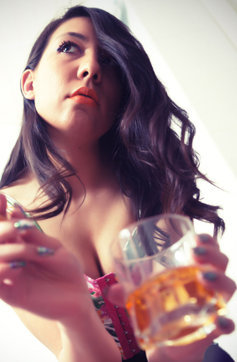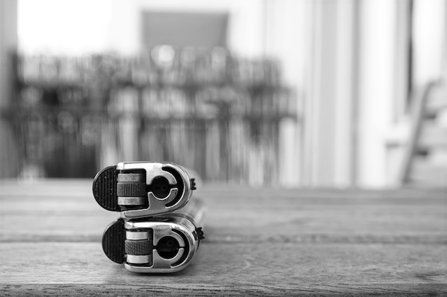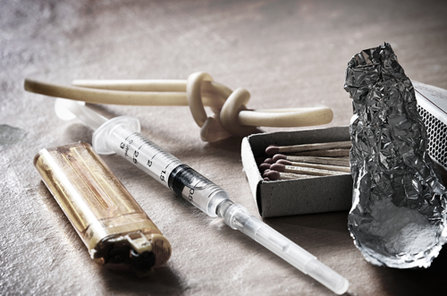Save Your Teen by Spotting Changes that Result from Drug Use
Far too often, drug use progresses to addiction and even an overdose death without a parent realizing what the real problem was. It’s more important than ever before that a parent knows how to identify the changes that occur when a teen or young adult begins to use drugs. This article does not cover the specific effects of different drugs or alcohol but rather the kinds of general emotional, physical and behavioral changes a parent may see. Young people try to stay away from their parents while they are high or drunk, so the best hope a parent may have of identifying drug use is spotting the changes in attitudes, health or activities. Here’s a thorough list of the changes you should be alert for.

You may find the same item in more than one category if it applies to both.
Emotional Changes
- More drama, suspicion, grief, apathy
- Bursts of anger and counter-accusations if questioned on activities or whereabouts
- Volatile emotions
- Takes no responsibility for events but blames others
- Depression, gloomy or negative attitudes
- Disinterest in former activities, goals or school
- Anger, hostility, confrontational
- Could appear somewhat delusional or paranoid at times
- Less communicative, more secretive
- Withdrawn, isolated
- Very different moods during different parts of the day (for example, excited in the morning and gloomy at night)
Health or Physical Changes
- Nosebleeds
- Frequent runny nose or sniffles
- More frequent illnesses
- Complains of nausea, stomachache or constipation
- Eyes are dry or red, asks for eye drops frequently
- Seizures
- Vomiting
- Sudden or dramatic weight loss or gain
- Sweatiness or change in odor
- Clenching teeth or complaining of sore jaw
- Unintelligible, fast or slurred speech
- Overly tired, needs naps at unusual times
- Groggy, less alert

Changes in Appearance
- No longer cares about appearance
- Wears dirty or torn clothes (not the stylish kind of torn clothes)
- Stops bathing regularly and rejects requests that he start
- Hands and feet are filthy
- Complexion roughens due to lack of care, drug use or smoke
- Red, flushed cheeks or face
- Small sores or scars on arms or legs
- Red, irritated eyes
- Sores or irritation around mouth
- Abrasions or bruises not explained by sports or other normal activities
- Paint or oily stain marks on face, fingers, clothing or rags
- Stains or burns on fingertips
- Unusual smells on his person, his clothes or possessions
- Paints fingernails with marker or white correction paint
- Keeps body covered with long sleeves, long pants (even in hot weather), hoodies
- Covers eyes with sunglasses
Behavioral Changes

- Secrecy, staying in his room for long periods
- Avoiding eye or physical contact
- Refusal to accompany family on outings
- Demands privacy for room, possessions, activities, phone calls, internet history
- Long absences from home, especially at night and especially if they are kept secret
- Lack of communication, rejecting appeals to communicate
- Lowered inhibitions, not caring how he acts or what he says around family or friends
- Females dressing in a far more sexy manner, refusing to change
- Cravings for sweet, salty or fatty snacks, especially when frequent or at odd times
- Mood changes or emotional instability
- Loud, obnoxious behavior
- Outbursts of anger or accusations
- Forgetful, poor memory
- Inability to focus on tasks or unusually sharp focus for longer periods than usual
- Unusually excited, especially at odd times
- Secretive, lies frequently
- Sullen, withdrawn, depressed
- Odd sense of humor, does not laugh at things he used to think funny or laughs at nothing
- Loss of motivation, abandonment of goals
- Lack of coordination, falls, hitting objects when he moves
- Breaking objects by accident
- Finding excuses for any problem, routinely blames others
- Refusal to contribute to the family, school, community
- Switching friends for no apparent reason
- Refusal to stop seeing friends or sexual partners parents disapprove of
- Lack of motivation or interest in the future
- Running into legal problems like vandalism or shoplifting
- Car accidents or damage to vehicle, especially if repeated
- Car is missing because it’s been loaned out (his own car or family car)

Personal Habits
- Frequent use of gum, mints or mouthwash
- Increased use of room deodorizers or air fresheners
- Frequent use of over-the-counter preparations to reduce eye reddening, nasal irritation or constipation
Finance and Possessions
- Some of his own possessions or those from the household are missing, especially small valuables like jewelry or electronics
- Gifts soon disappear, with flimsy excuses offered for the disappearance
- Savings or checking accounts are emptied
- Credit card bills appear with high balances for a young person
- Having much less money than usual
- Having too much money (could mean drug dealing)
- Never having money despite having a job or ample allowance
- Household money missing
- Family credit cards show unexplained charges (especially gas station charges)
- Asking for cash, with a different “logical” reason each time
- Possessions become messy, broken or dirty
- Disinterest in repairing possessions
Household Changes

- Spoons, aluminum foil, markers are missing
- Small valuables are missing
- Odd smells in bathrooms, child’s room, garage, shed, vehicles or other isolated spaces
- Alcohol (such as rum, whiskey or vodka) is watered down
- Air fresheners or dryer sheets are missing or have moved to his room or are found in his trash
- Toilet paper or paper towel rolls are found in his room
- Cut-up soda cans or broken light bulbs found
- Multiple disturbed places in the yard (where drugs were buried to keep them out of sight)
- Missing pills, bottles of medication, containers of alcohol or alcohol levels in bottles (don’t forget to check the homes of relatives, especially any sick, injured or recently deceased ones)
- Missing over-the-counter medications, especially cough syrup, cold pills or Dramamine
- Finding empty pill bottles, empty cough syrup containers or empty blister packs for pills
- Alcohol found in concealed locations
- Having more markers, correction fluid or computer duster around than usual (especially if there are empty containers or dried-up markers)
- Multiple butane lighters and refills in room or possessions (when he does not smoke)
School or Work Performance
- Grades drop quickly or slowly
- Frequent discipline problems reported
- Complaints from teachers or co-workers
- Failure to complete assignments or only a cursory attempt is made
- Truancy
- Loss of interest in learning or graduating
- Abandonment of college or post-high school educational plans
- Abandonment of professional goals
- Reprimands from school or work
- Being fired from a job or jobs
- Taking far less demanding jobs
- Quitting teams, sports, clubs or groups he used to like
- Claiming “It doesn’t matter anymore,” or “I didn’t really want that anyway.”
- Changes in Energy
- Unusual lethargy and fatigue
- Periods of sleeplessness and high activity, followed by sleeping around the clock
- Dramatic changes in schedule, usually to one that is very irregular
- Reluctance or refusal to get out of bed
- Much more energy than usual, for longer periods or at unusual times of the day or night
Drugs, Paraphernalia and Other Signs

Of course, the discovery of drugs or drug paraphernalia is a dead giveaway. You could find capsules, pills, marijuana, powders in small bags or tins, pipes, bongs, prescription bottles, alcohol bottles or cans, butane lighters, smoking devices made from aluminum foil, aluminum cans, light bulbs, toilet paper or paper towel rolls, dryer sheets, rolling papers. There could also be syringes, rubber tubing, belts found in strange locations, burnt spoons. Cannabis products could include chopped-up leaves, flowers, oily concentrates in small jars, glasslike amber-colored material, gummy candies, drinks, chocolate, baked goods, candies and more.
You can also search for:
- Torn, folded scraps of paper
- Small torn corners of plastic bags
- Small pieces of aluminum foil that are flat, burnt or wadded up in balls
- Any object with residues of green flecks, white, brown or pink powder
Also look for black smudges or fingerprints on furniture, doorknobs or light switches. Check inside stuffed animals or toys for recesses that drugs or paraphernalia might be stored in.
There are now hundreds of items sold for or commonly used for concealment:
- Old electronics
- VHS or CD cases
- Books (hollowed out)
- Hairbrushes
- Travel mugs
- Wall sockets with hidden compartments
- To find more, do an internet search for “stash safe” or “diversion safe.”
Any adolescent can manifest some of the signs on this list. The more of these signs you see, the more likely it is that drug use is at the heart of your problem. Even if you eventually find that drugs are not being used, your child is showing signs that he need more attention and help.
For more information on identifying the signs of drug use and what to do if you find them, please consult this article:
Identifying Drug Use Could be #1 Parenting Skill of the Future
Narcononis dedicated to saving lives from drug addiction. To get help for an addictive loved one, call us at 1-877-782-7409 and learn how we have been helping the addicted build new, strong, sober lives for more than fifty years.
Reference Links:
- https://www.ncadd.org/about-addiction/signs-and-symptoms/what-to-look-for-signs-and-symptoms
- http://www.drugfree.org/resources/is-your-teen-using-signs-and-symptoms-of-substance-abuse/
- http://drugabuse.com/15-warning-signs-that-your-kid-may-be-using-drugs/
- http://www.letsfaceheroin.com/parents.html
- http://svtc.info/signs-of-drug-abuse/?


 ®
®